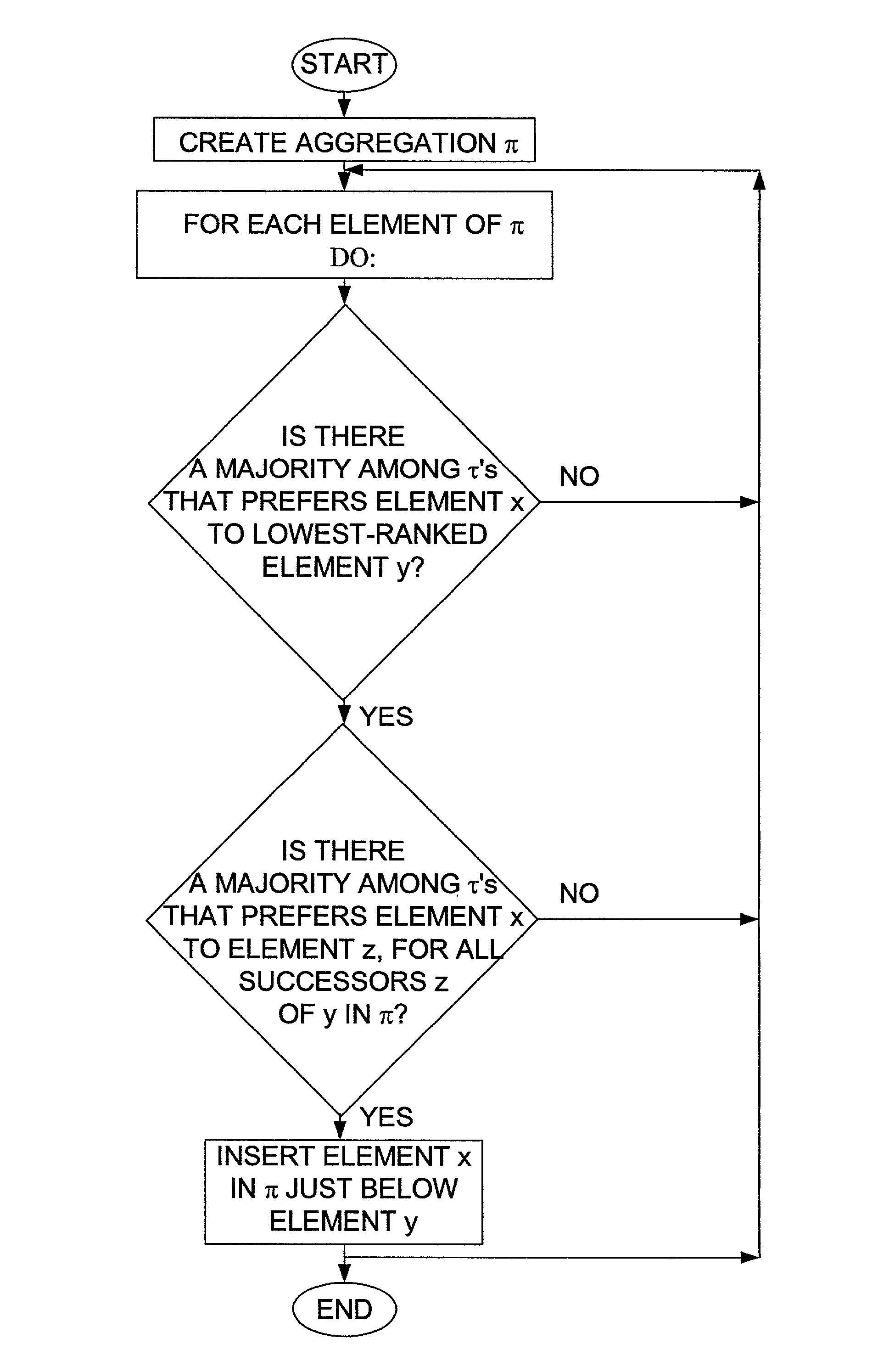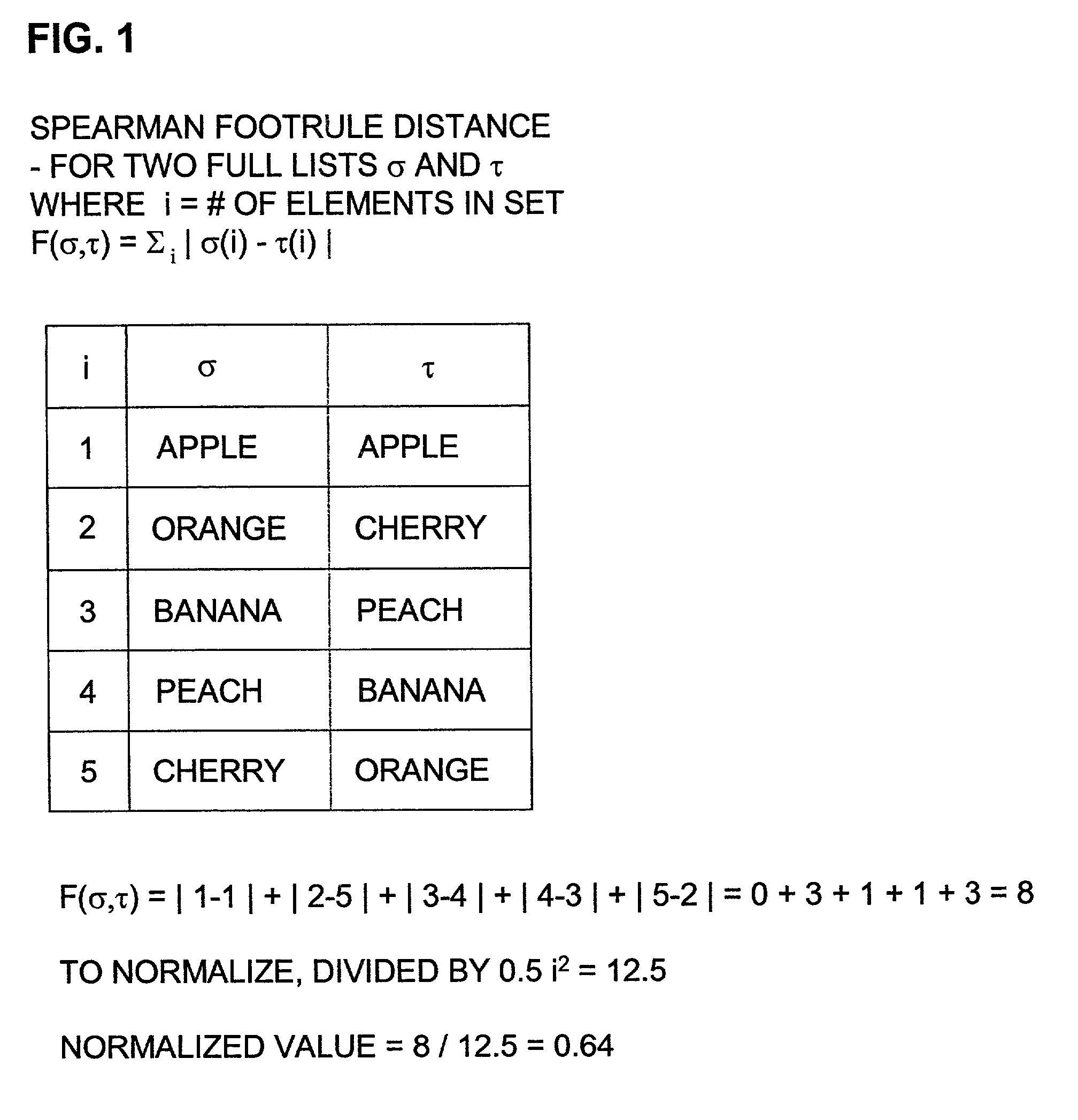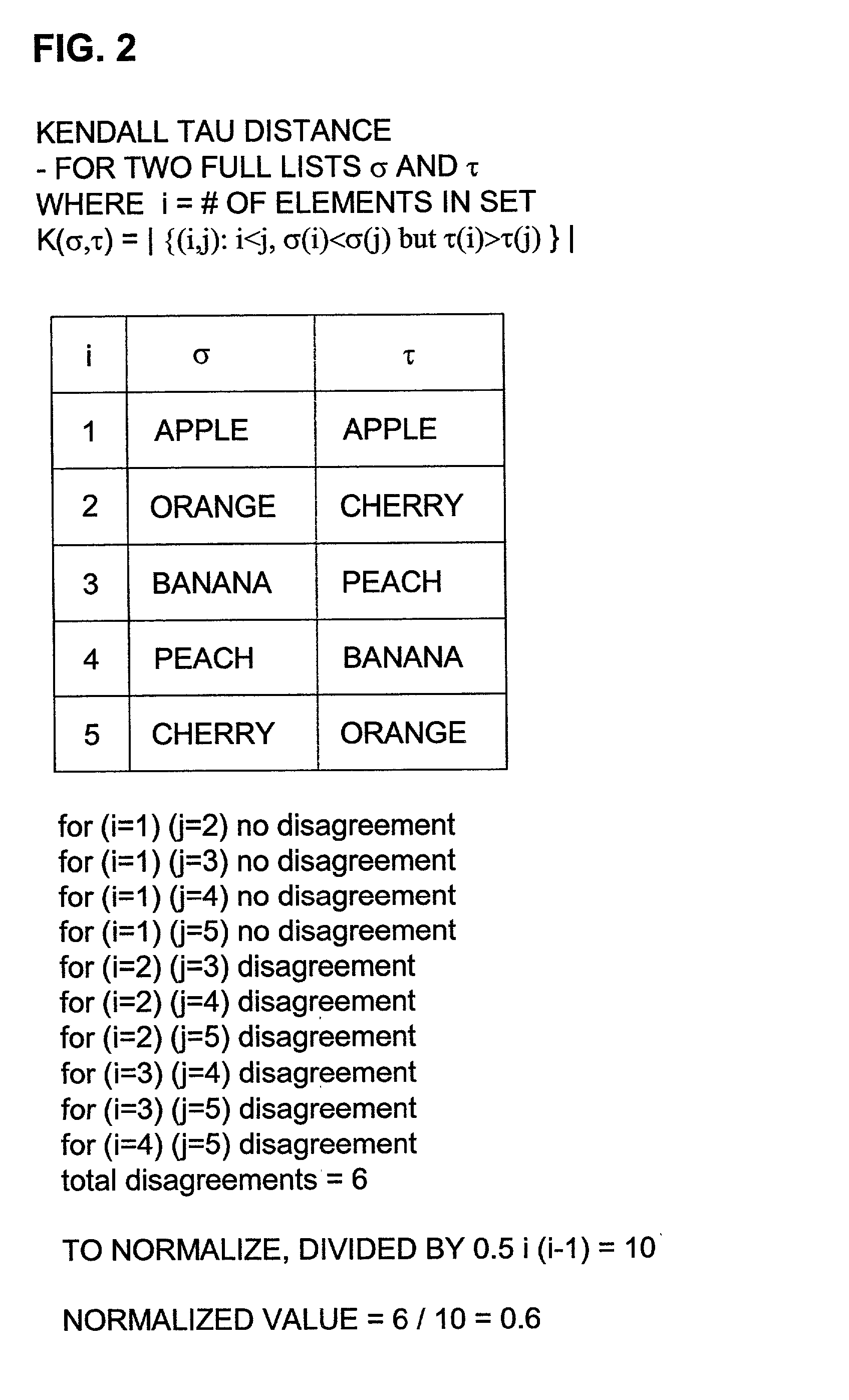System and method for aggregating ranking results from various sources to improve the results of web searching
a ranking system and ranking technology, applied in the field of aggregating ranking results from various sources, can solve the problems of not being able to achieve a consensus ranking of alternatives, difficult to achieve, and no one ranking method can be considered broadly acceptabl
- Summary
- Abstract
- Description
- Claims
- Application Information
AI Technical Summary
Benefits of technology
Problems solved by technology
Method used
Image
Examples
example 1
[0120]
π=(1,2,3), τ1=(1,2), τ2=(2,3), τ3=τ4=τ5=(3,1).
[0121]Given that π satisfies Definition 5, K(π, τ1, τ2, . . . , τ5)=3, but transposing 1 and 3 decreases the sum to 2.
[0122]Every Kemeny optimal permutation is also locally Kemeny optimal, but the converse does not hold (cf. Example 1). Furthermore, a locally Kemeny optimal permutation is not necessarily a good approximation for the optimal. For example, if the τ's are as in Example 1, the number of (3,1) partial lists is very large, and there is only one occurrence of each of the partial lists (1,2) and (2,3), then (1,2,3) is still locally Kemeny optimal, but the ratio of the SK to the optimal may be arbitrarily large. Nevertheless, the important observations, proved next, are that a locally Kemeny optimal aggregation satisfies the extended Condorcet property and can be computed efficiently.
Convention
[0123]Recall the convention that π ranks x above y (i.e., prefers x to whenever π(x)<π(y).
Lemma 6
[0124]Let π, a permutation on alter...
PUM
 Login to View More
Login to View More Abstract
Description
Claims
Application Information
 Login to View More
Login to View More - R&D
- Intellectual Property
- Life Sciences
- Materials
- Tech Scout
- Unparalleled Data Quality
- Higher Quality Content
- 60% Fewer Hallucinations
Browse by: Latest US Patents, China's latest patents, Technical Efficacy Thesaurus, Application Domain, Technology Topic, Popular Technical Reports.
© 2025 PatSnap. All rights reserved.Legal|Privacy policy|Modern Slavery Act Transparency Statement|Sitemap|About US| Contact US: help@patsnap.com



